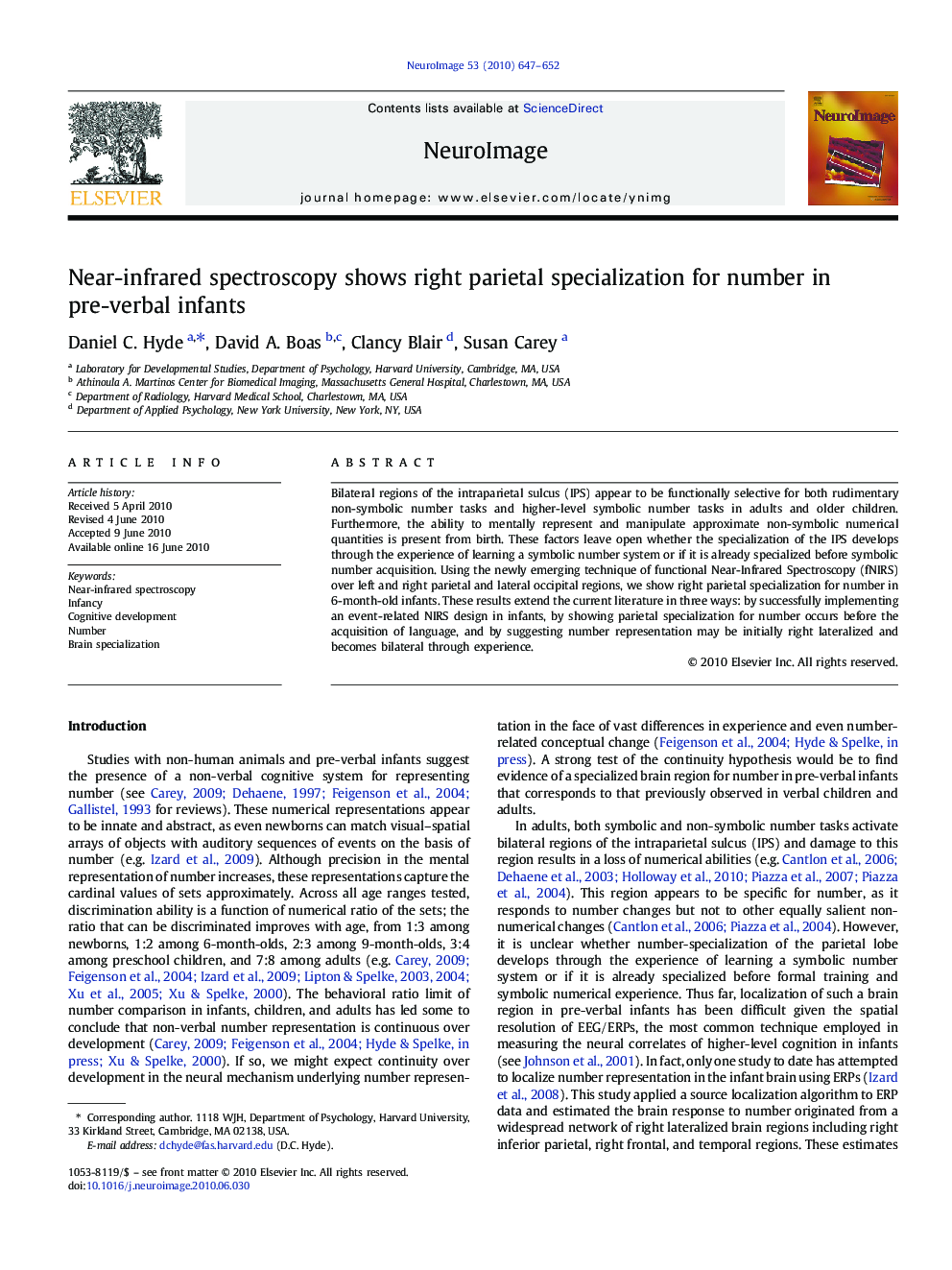| Article ID | Journal | Published Year | Pages | File Type |
|---|---|---|---|---|
| 3072281 | NeuroImage | 2010 | 6 Pages |
Bilateral regions of the intraparietal sulcus (IPS) appear to be functionally selective for both rudimentary non-symbolic number tasks and higher-level symbolic number tasks in adults and older children. Furthermore, the ability to mentally represent and manipulate approximate non-symbolic numerical quantities is present from birth. These factors leave open whether the specialization of the IPS develops through the experience of learning a symbolic number system or if it is already specialized before symbolic number acquisition. Using the newly emerging technique of functional Near-Infrared Spectroscopy (fNIRS) over left and right parietal and lateral occipital regions, we show right parietal specialization for number in 6-month-old infants. These results extend the current literature in three ways: by successfully implementing an event-related NIRS design in infants, by showing parietal specialization for number occurs before the acquisition of language, and by suggesting number representation may be initially right lateralized and becomes bilateral through experience.
Research Highlights► Near-infrared spectroscopy localizes the neural basis of number in infants. ► Sensitivity to number observed in a right inferior parietal region. ► Parietal response to number shows specialization; dissociates from response to shape. ► Right lateralization contrasts with bilateral activity seen previously in adults.
